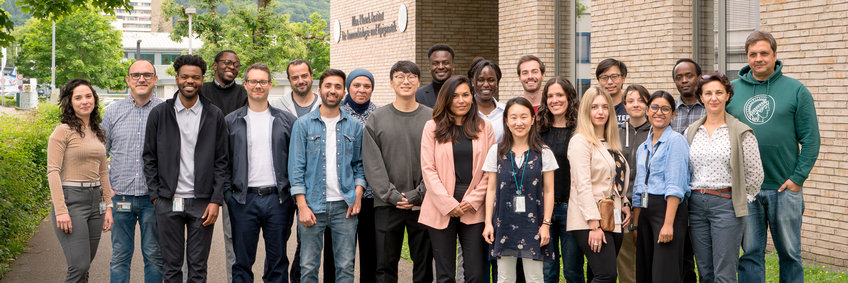
Laboratory Ibrahim Cissé
Single Molecule and Super-Resolution imaging in live cells
We leverage expertise in Single-Molecule and Super-Resolution imaging in live cells to study collective behaviors (e.g., protein clustering) emerging from weak or transient biomolecular interactions in mammalian cells. We unveil, often for the first time, that these clusters exist in living cells, and we expand both on the imaging approaches and the cellular and molecular biology techniques to discover the biophysical mechanisms of action and their function in vivo.
Mission
Cisse’s lab uses physical techniques to visualize weak and transient biological interactions and to study their emergent phenomena directly in living cells with single-molecule sensitivity. The lab is interested in the molecular events that unfold when genes are switched on inside living cells. For activating a gene, the information in its DNA must first be transcribed into molecules of RNA—a task carried out by the enzyme RNA polymerase II. The activity of this enzyme has been studied primarily in test tubes, and surprisingly, little is known about how the polymerase locates and activates its target genes inside the crowded nucleus of living cells. Our laboratory was the first to demonstrate the existence of dynamic Pol II clusters in living cells (Cisse et al., 2013 Science) and further discovered that Pol II and Mediator associate in diffraction-sized biomolecular condensates in living cells (Cho et al., 2018 Science). We have identified that Pol II and Mediator condensates are associated with super-enhancer-controlled genes (Cho et al., 2018 Science & Sabari et al., 2018 Science).
Approach
The Cisse Lab develops quantitative live cell imaging approaches to reveal weak and transient assemblies at the single molecule resolution. We combine cell and molecular biology techniques, biochemistry, genomics, and super-resolution imaging of live cells to reveal when protein clusters emerge and to study their dynamics and function directly in a living cell. The department currently houses state-of-the-art microscopes, including PALM/STORM, STED, Minflux, and Lattice light-sheet.
Selected Publications
More publications on Google Scholar, or check out Pubmed for a list of publications.